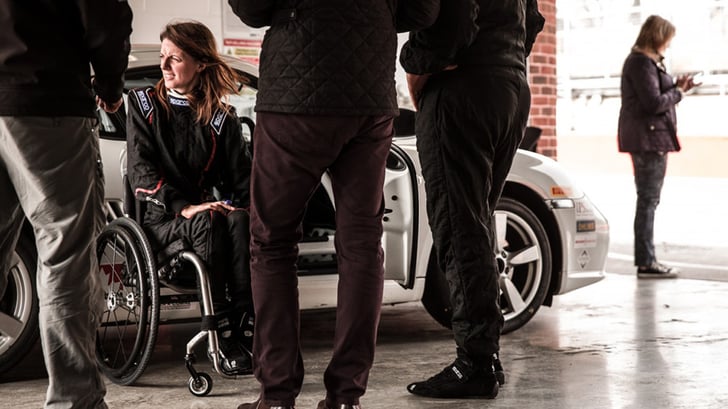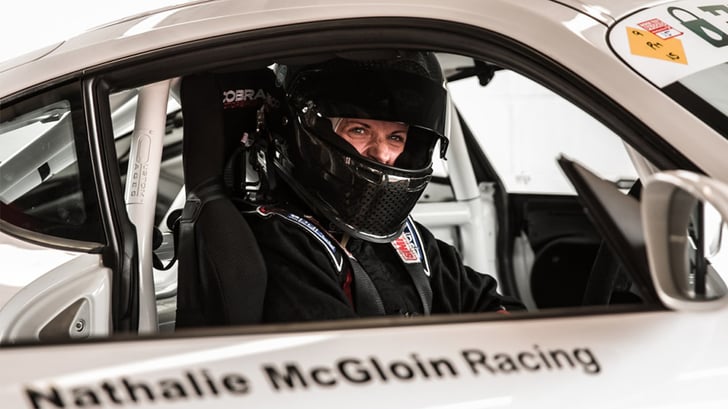There are 10 000 people with a racing license in the UK. 200 of them are women, and one of them has a spinal cord injury. Her name is Nathalie McGloin and today she is at the ACCT symposium in Sweden to share her inspiring story. For you who will miss it – here is a teaser!

“When you’re on a race track with able-bodied drivers, you’re no longer a wheelchair user – you’re another competitor. It’s the freedom you strive for after a spinal cord injury," Nathalie says. "You want to be viewed as a person, not a disabled person.”
One might think that being a woman in the racing world would be enough of an obstacle, but that hasn’t caused any problems.
“It hasn’t been a factor at all. People see my wheelchair before they see my gender. They are more interested in how the car needs to be adapted for my injury level with hand controls and so on”, she says.
The injury
Nathalie broke her neck in a car crash as a passenger when she was 16. At university, Nathalie started playing wheelchair rugby and eventually joined the national squad for Great Britain. A team mate introduced her to racing and she was hooked.
“When you are in a wheelchair and paralyzed from the chest down, there are limited ways of getting an adrenalin rush. You can’t do the things that you were able to do when you were a kid, like riding a bike with no hands, jumping off a high wall or other things you get an adrenalin fix from. Wheelchair rugby is one of them but racing is a whole different ball game”, Nathalie says.

The ticket to the race track
Six years after her introduction to racing, Nathalie became the first woman in the UK with a spinal cord injury to pass her ARDS exam thus attaining the license required to compete in British Club Motorsport.
“I had to demonstrate that I can exit the car in seven seconds unaided before I got the race license, so I’m not afraid of that. If the car is damaged to the point where an exit route is unavailable – if a door won’t open or if the cage is compromised – an able-bodied driver is unable to get out anyway. So I’m not any more disadvantaged in that respect“, Nathalie says.
But this hardboiled approach to high-speed sports didn’t come by inheritance or an extraordinary taste for adventure, but from a coincidence.
“I wouldn’t have been exposed to racing if I hadn’t sustained my injury. Life takes you down certain paths because of your situation. If I hadn’t been injured I think my life would have been much more conventional. You know – a conventional job with office hours… I don’t think I would have been as adventurous as I am now. “
Determination
Racing is probably not an immediate choice if you have a spinal cord injury, especially not if you have a high injury – or are a woman. Nathalie is an inspiration to so many people – to people with tough conditions, to women involved in “male sports” and to anyone who needs a living example of what can be achieved with determination.
“Actually, the wife of one my competitors said that if I can do it, she could do it. It’s great to be able to inspire others. The more ladies we can get involved, the better”, Nathalie concludes.
Photos: Chris Hogg
To read more about the ACCT (Advancing Continence are Together) symposium, please vist the ACCT website.




